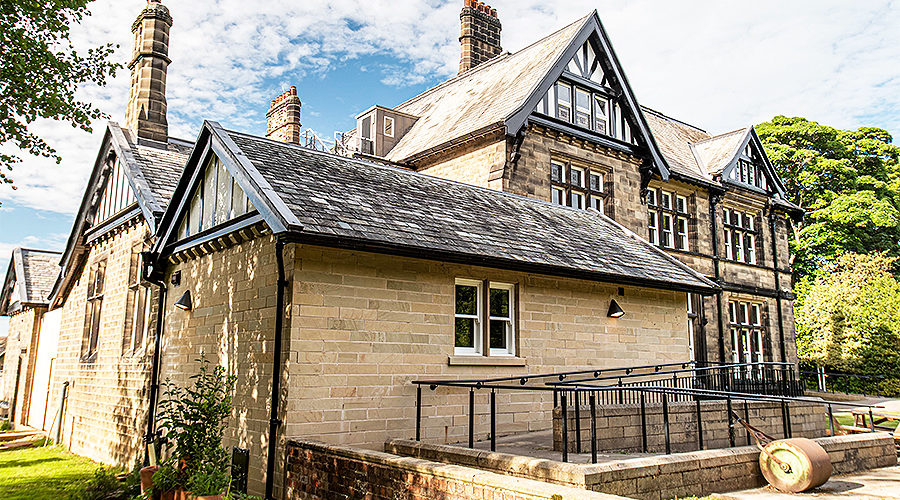The property portfolios of the UK’s public sector contain thousands of listed buildings, all of special architectural or historical interest and some of national importance. With an obligation to preserve these buildings’ heritage while ensuring they are fit and safe for modern use, the task of renovation can often be highly complex. Here, the NU Construction team explain the challenges of renovating listed buildings and the benefits of working with a trusted heritage construction specialist.
Boyer
Navigating regulations and planning permission
Due to the special nature of private- and public sector-owned listed buildings, they must be granted listed building consent from their local planning authority before any work can begin on alterations or renovations. With a duty to ensure that the building’s heritage is protected and preserved, planning departments require detailed plans about the proposed redevelopment, including how this will impact the character of a building. For instance, they will not only want to know how the finished building will look, but also the materials and building techniques to be used.
Getting plans approved can not only prove costly and time consuming, but the process can also frequently end up being lengthy. Given that the average wait for planning permission in the UK is between eight to 13 weeks, with complex cases for listed buildings1 often taking longer, it’s important to work with a partner that has significant experience and knowledge working through the process to avoid protracted processes that will also impact on deadlines, contractor availability and, ultimately, costs.
One of the benefits of working with a company that specialises in working on heritage projects is the expertise and knowledge they have in both listed buildings and the planning processes, which can improve the chances of submitted plans being approved first time, without amendment. An experienced provider will be able to specify suitable materials and building techniques that are sympathetic to the building and will likely satisfy planning requirements.
A long-established heritage specialist will have the extensive supply network needed to source the right kinds of materials required for the job, also the knowledge to work with them. Moreover, they will also understand that some of the original materials used in these properties will need extra care and attention as they may be damaged by modern power tools and will adopt more sympathetic techniques accordingly.
Aside from planning permission, renovation that involves a change of use, the building of an extension or other significant adaptation also needs to meet Building Regulations. This added complexity makes it vital that any heritage contractor also has a comprehensive grasp of current regulations and legislation.
Safety and security are vital considerations when renovating a listed building. Contractors will not only have to comply with health and safety regulations but will also need to know the types of issues that can arise with older properties, such as weak floors, loose masonry and failing roofs. To protect employees and users, the areas being worked on, and sometimes the entire building, may need to be closed off and secured.
When renovating listed buildings, unforeseen issues can frequently arise. Contractors can discover historical features that have lain hidden for centuries and now need to be preserved, or there can be structural issues that need urgent repair. Experienced heritage specialists will know where these issues are likely to appear and how to address them. Moreover, they will be prepared for these potentialities and will be able to work flexibly to overcome delays and additional requirements.
Cliffe House case study
The challenges of renovating a listed building can be seen from the work done at Cliffe House, Huddersfield. Owned by Kirklees Council, this Grade II-Listed mansion provides bespoke learning and events for schools, colleges and the wider community.
The extensive refurbishment of Cliffe House included reroofing, rewiring, the installation of new heating and sprinkler systems and improvements to the building’s fire prevention system and fire egress arrangements. In addition, the building was internally and externally decorated with repairs prior to painting; floorcoverings were replaced; sanitary and welfare provisions were upgraded; stained-glass windows were fully refurbished and minor amendments were made to the drainage system.
The wide variety of work carried out on the property required a heritage specialist with extensive experience in the development process, together with knowledge of conservation and ecology.
Additionally, a comprehensive supply chain list of accredited restoration craftspeople was required to ensure the most suitable experts were used for the specialised tasks. Specialist contractors, for example, were used to strengthen the structural-timber, king-post roof trusses; bespoke patent glazing was manufactured to replicate the original glass rooflights and original tiled walls and floors were restored using a specialist heritage tiler.
To maintain the heritage of the building, existing sash windows were also reconditioned. Westmoreland Green Slates and ornate lead flashing were used for reroofing, stonemasons repointed repairs with lime mortar and lime plasters were used to replicate and match existing plasterwork. At the same time, the installation of new heating and wiring required careful consideration and a methodical approach to avoid damage to ornate plasterwork, skirtings and floorboards.
One of the more complex issues was the stained-glass window. Following a full survey by a specialist conservation consultant, the glass needed to be removed from the frame for workshop repair. Panels were taken apart and the glass cleaned, whilst leads and broken glass were replaced where necessary. During repair, the frames needed to be weather protected with clear glass, cut to the same size as the stained glass and fitted into the frame rebate.
By partnering with a specialist heritage construction company like Nu Construction, Kirklees Council ensured the work carried out at Cliffe House restored and preserved the building’s historic features while ensuring it was upgraded and fit for purpose as a community facility. All this was achieved in line with planning requirements and Building Regulations.










